-
 Bitcoin
Bitcoin $105,385.4541
0.55% -
 Ethereum
Ethereum $2,537.5225
0.93% -
 Tether USDt
Tether USDt $1.0003
-0.02% -
 XRP
XRP $2.1601
0.92% -
 BNB
BNB $646.8156
0.36% -
 Solana
Solana $150.4487
4.30% -
 USDC
USDC $0.9999
0.00% -
 Dogecoin
Dogecoin $0.1759
-0.22% -
 TRON
TRON $0.2729
1.31% -
 Cardano
Cardano $0.6299
0.61% -
 Hyperliquid
Hyperliquid $40.6968
1.01% -
 Sui
Sui $3.0011
3.68% -
 Bitcoin Cash
Bitcoin Cash $459.2113
6.74% -
 Chainlink
Chainlink $13.1405
1.21% -
 UNUS SED LEO
UNUS SED LEO $9.1731
1.28% -
 Avalanche
Avalanche $19.0667
1.05% -
 Stellar
Stellar $0.2576
0.75% -
 Toncoin
Toncoin $2.9670
0.95% -
 Shiba Inu
Shiba Inu $0.0...01199
-0.13% -
 Litecoin
Litecoin $85.9529
1.13% -
 Hedera
Hedera $0.1542
-0.96% -
 Polkadot
Polkadot $3.7918
1.11% -
 Ethena USDe
Ethena USDe $1.0000
-0.03% -
 Monero
Monero $315.8141
0.84% -
 Dai
Dai $0.9998
-0.01% -
 Bitget Token
Bitget Token $4.5147
-0.55% -
 Pepe
Pepe $0.0...01115
2.24% -
 Uniswap
Uniswap $7.1330
-0.91% -
 Pi
Pi $0.6011
-1.51% -
 Aave
Aave $273.4436
0.48%
What should I do if the gap is filled after a gap-up opening? Is it the end of the trend or a technical retracement?
After a gap-up, if the price fills the gap, analyze the trend, volume, and technical indicators to decide whether to hold, take profits, or exit your position.
Jun 14, 2025 at 07:21 pm
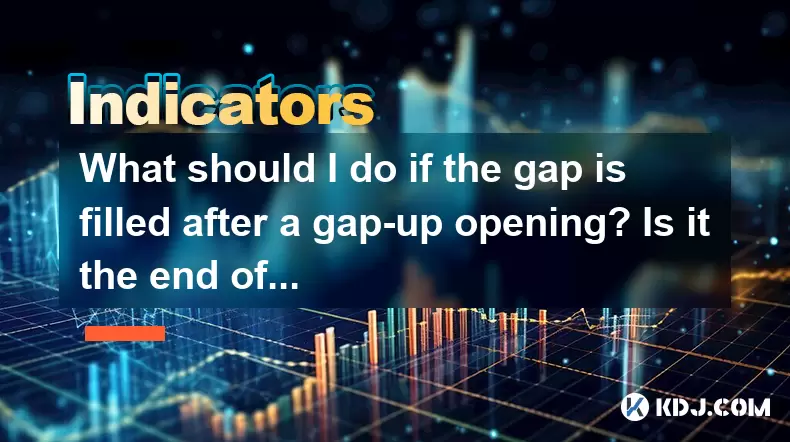
When a cryptocurrency experiences a gap-up opening, it can be an exciting yet confusing time for investors. A gap-up occurs when the opening price of a cryptocurrency is significantly higher than the previous closing price, often leaving a visible gap on the chart. However, if this gap is filled shortly after, it raises questions about the continuation of the trend or if it's merely a technical retracement. Let's delve into what you should do in such a scenario and how to interpret the market's movements.
Understanding Gap-Ups and Gap Fills
A gap-up is a phenomenon where the opening price of a cryptocurrency is higher than the previous day's closing price, creating a noticeable gap on the chart. This can happen due to positive news, high demand, or other market dynamics. When the price retraces back to fill this gap, it's known as a gap fill. A gap fill occurs when the price returns to the level of the previous close, effectively filling the gap on the chart.
The filling of a gap can lead to confusion about whether the bullish trend that caused the gap-up is over or if it's just a temporary retracement. To understand this better, it's crucial to analyze the context and subsequent price movements.
Analyzing the Market Context
When a gap is filled after a gap-up opening, the first step is to analyze the broader market context. Look at the overall trend of the cryptocurrency. If the gap-up occurred during a strong bullish trend, a gap fill might just be a minor retracement within that larger trend. On the other hand, if the gap-up was an isolated event amidst a sideways or bearish market, the gap fill could signal the end of the bullish move.
Additionally, consider the volume during the gap-up and the gap fill. High volume during the gap-up indicates strong interest and conviction in the price movement. If the gap fill happens on low volume, it might suggest that the retracement is not significant and the bullish trend could resume.
Technical Indicators to Watch
Several technical indicators can help you determine whether the gap fill is a sign of a trend reversal or a mere retracement. Here are a few to consider:
Moving Averages: If the price remains above key moving averages (such as the 50-day or 200-day moving average) after the gap fill, it suggests that the bullish trend is still intact. Conversely, if the price falls below these averages, it could indicate a potential trend reversal.
Relative Strength Index (RSI): An RSI reading above 50 generally indicates bullish momentum. If the RSI remains above this level after the gap fill, it's a positive sign for the continuation of the trend. A drop below 50, especially if accompanied by a bearish divergence, could signal a trend reversal.
Support and Resistance Levels: If the gap fill occurs near a strong support level and the price bounces back from this level, it's likely a technical retracement. However, if the price breaks below key support levels, it might indicate the end of the bullish trend.
Strategies for Trading After a Gap Fill
Depending on your analysis, you can adopt different trading strategies after a gap fill. Here are some approaches:
Hold and Monitor: If your analysis suggests that the gap fill is a minor retracement within a strong bullish trend, you might choose to hold your position and monitor the price action. Keep an eye on the technical indicators and volume to confirm your analysis.
Take Partial Profits: If you're unsure about the continuation of the trend, consider taking partial profits. This allows you to lock in some gains while still maintaining a position in case the bullish trend resumes.
Set Stop-Losses: Regardless of your strategy, it's crucial to set stop-losses to manage risk. Place your stop-loss below key support levels to protect your capital in case the trend reverses.
Look for Re-Entry Points: If you decide to exit your position after the gap fill, look for potential re-entry points if the bullish trend resumes. Watch for bullish candlestick patterns, such as a hammer or a bullish engulfing pattern, near key support levels.
Psychological Aspects and Market Sentiment
The psychological impact of a gap fill should not be underestimated. Market sentiment plays a significant role in price movements. If the gap fill leads to widespread fear and panic among investors, it could accelerate a trend reversal. Conversely, if investors remain optimistic and view the gap fill as a buying opportunity, the bullish trend might resume.
Monitor social media, forums, and news outlets to gauge market sentiment. Positive sentiment, even after a gap fill, can be a strong indicator that the bullish trend will continue. Negative sentiment, on the other hand, might suggest that the gap fill is the beginning of a trend reversal.
Case Studies and Historical Data
Looking at historical data and case studies can provide valuable insights into how gap fills have impacted trends in the past. For example, if a particular cryptocurrency has a history of gap fills being followed by continued bullish trends, it might increase your confidence in holding your position.
Analyze past gap fills in similar market conditions to see how the price reacted. Did the price resume its bullish trend after a gap fill, or did it mark the beginning of a bearish reversal? Historical data can help you make more informed decisions.
Frequently Asked Questions
Q: Can a gap fill be a bullish signal in some cases?
A: Yes, a gap fill can be a bullish signal if it occurs on low volume and the price quickly resumes its upward trend. This can indicate that the gap fill was a minor retracement within a strong bullish trend, and investors are using it as a buying opportunity.
Q: How can I differentiate between a gap fill that signals a trend reversal and one that is just a retracement?
A: To differentiate between a gap fill that signals a trend reversal and one that is just a retracement, consider the following factors: the overall trend, volume during the gap-up and gap fill, technical indicators like moving averages and RSI, and the proximity to key support and resistance levels. A gap fill on low volume, with the price remaining above key moving averages and support levels, is more likely to be a retracement.
Q: Should I always exit my position when a gap is filled?
A: No, you should not always exit your position when a gap is filled. Your decision should be based on a thorough analysis of the market context, technical indicators, and volume. If the analysis suggests that the gap fill is a minor retracement within a strong bullish trend, you might choose to hold your position or even add to it.
Q: How important is volume when analyzing a gap fill?
A: Volume is extremely important when analyzing a gap fill. High volume during the gap-up indicates strong interest and conviction in the price movement. If the gap fill happens on low volume, it suggests that the retracement might not be significant, and the bullish trend could resume. Conversely, a gap fill on high volume could indicate a more significant shift in market sentiment and the potential for a trend reversal.
Disclaimer:info@kdj.com
The information provided is not trading advice. kdj.com does not assume any responsibility for any investments made based on the information provided in this article. Cryptocurrencies are highly volatile and it is highly recommended that you invest with caution after thorough research!
If you believe that the content used on this website infringes your copyright, please contact us immediately (info@kdj.com) and we will delete it promptly.
- SecondSwap Expands to Avalanche (AVAX) Blockchain Targeting Locked and Vesting Digital Assets
- 2025-06-15 23:35:12
- With the start of Season 8, a Luckier Coin has been discovered alongside the Ring of Jinx. The secret hunting continues!
- 2025-06-15 23:35:12
- Remove Taxes on Crypto Profits
- 2025-06-15 23:30:12
- Crypto Markets Brace for Impact Ahead of Key U.S. Inflation Data
- 2025-06-15 23:30:12
- CBOE Global Markets Launches New Bitcoin Futures Contracts Called Cboe FTSE Bitcoin Index Futures (XBTF)
- 2025-06-15 23:25:12
- El Salvador Has Continued to Buy Bitcoin (BTC) Despite Striking a Deal with the IMF
- 2025-06-15 23:25:12
Related knowledge
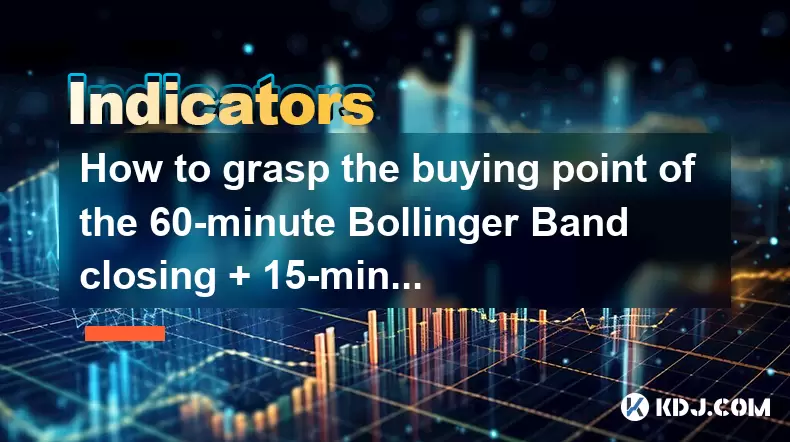
How to grasp the buying point of the 60-minute Bollinger Band closing + 15-minute MACD bottom divergence?
Jun 16,2025 at 12:03am
Understanding the Bollinger Band Closing Signal on a 60-Minute ChartThe Bollinger Band closing signal refers to a situation where the price closes outside the upper or lower band and then re-enters it in the subsequent candlestick. In this context, we focus on the lower Bollinger Band closing, which indicates a potential reversal from a downtrend. On th...
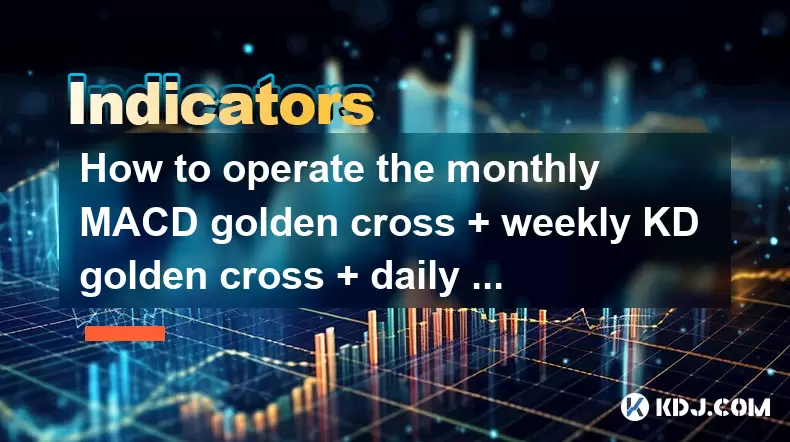
How to operate the monthly MACD golden cross + weekly KD golden cross + daily volume breakthrough?
Jun 15,2025 at 05:36am
Understanding the Strategy: Monthly MACD Golden CrossTo effectively operate the monthly MACD golden cross, traders must first understand what this signal entails. The MACD (Moving Average Convergence Divergence) golden cross occurs when the MACD line crosses above the signal line on a given chart timeframe. When this happens on the monthly chart, it sug...
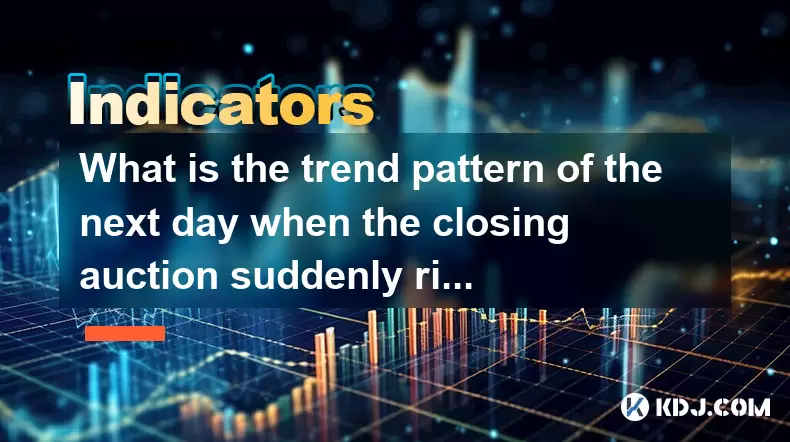
What is the trend pattern of the next day when the closing auction suddenly rises?
Jun 15,2025 at 08:15am
Understanding Closing Auctions in Cryptocurrency MarketsIn the context of cryptocurrency trading, a closing auction refers to a mechanism used by exchanges to determine the closing price of an asset at the end of a trading session. This process typically occurs within a short time window before the market closes for the day and aims to provide a fair an...

What does it mean when the volume fluctuates during the sideways trading at high levels?
Jun 15,2025 at 10:28am
Understanding Volume Fluctuations in Sideways TradingWhen volume fluctuates during sideways trading at high levels, it refers to the changes in the number of assets traded over a given period while the price remains relatively stable, moving within a defined range. This phenomenon typically occurs when the market lacks a clear directional bias—neither b...
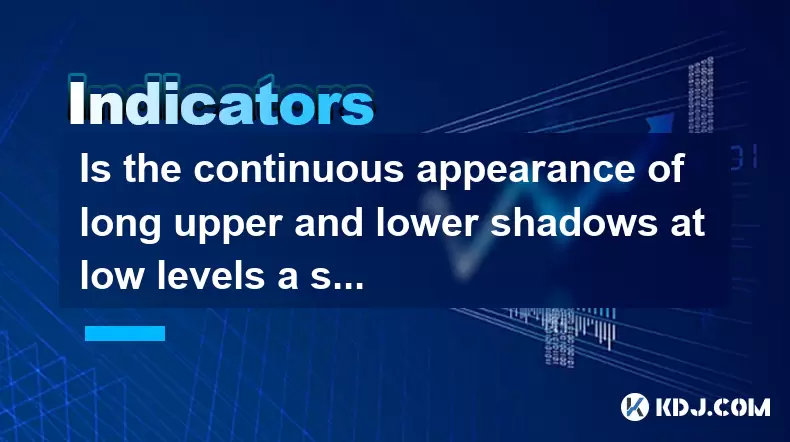
Is the continuous appearance of long upper and lower shadows at low levels a signal of accumulation?
Jun 15,2025 at 01:43am
Understanding Long Upper and Lower Shadows in Candlestick ChartsIn the world of cryptocurrency trading, candlestick patterns are widely used to analyze price movements. A long upper shadow, also known as a wick or tail, indicates that the price rose significantly during the period but was pushed back down by selling pressure. Conversely, a long lower sh...
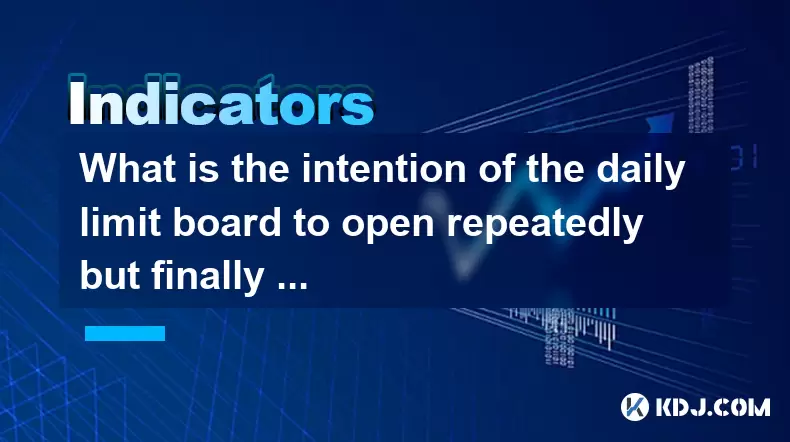
What is the intention of the daily limit board to open repeatedly but finally close?
Jun 15,2025 at 01:08am
Understanding the Daily Limit Board in Cryptocurrency TradingIn cryptocurrency trading, a daily limit board refers to a price movement restriction mechanism applied by certain exchanges or regulatory bodies. This mechanism is primarily used to prevent extreme volatility and panic selling or buying during periods of intense market fluctuation. When an as...

How to grasp the buying point of the 60-minute Bollinger Band closing + 15-minute MACD bottom divergence?
Jun 16,2025 at 12:03am
Understanding the Bollinger Band Closing Signal on a 60-Minute ChartThe Bollinger Band closing signal refers to a situation where the price closes outside the upper or lower band and then re-enters it in the subsequent candlestick. In this context, we focus on the lower Bollinger Band closing, which indicates a potential reversal from a downtrend. On th...

How to operate the monthly MACD golden cross + weekly KD golden cross + daily volume breakthrough?
Jun 15,2025 at 05:36am
Understanding the Strategy: Monthly MACD Golden CrossTo effectively operate the monthly MACD golden cross, traders must first understand what this signal entails. The MACD (Moving Average Convergence Divergence) golden cross occurs when the MACD line crosses above the signal line on a given chart timeframe. When this happens on the monthly chart, it sug...

What is the trend pattern of the next day when the closing auction suddenly rises?
Jun 15,2025 at 08:15am
Understanding Closing Auctions in Cryptocurrency MarketsIn the context of cryptocurrency trading, a closing auction refers to a mechanism used by exchanges to determine the closing price of an asset at the end of a trading session. This process typically occurs within a short time window before the market closes for the day and aims to provide a fair an...

What does it mean when the volume fluctuates during the sideways trading at high levels?
Jun 15,2025 at 10:28am
Understanding Volume Fluctuations in Sideways TradingWhen volume fluctuates during sideways trading at high levels, it refers to the changes in the number of assets traded over a given period while the price remains relatively stable, moving within a defined range. This phenomenon typically occurs when the market lacks a clear directional bias—neither b...

Is the continuous appearance of long upper and lower shadows at low levels a signal of accumulation?
Jun 15,2025 at 01:43am
Understanding Long Upper and Lower Shadows in Candlestick ChartsIn the world of cryptocurrency trading, candlestick patterns are widely used to analyze price movements. A long upper shadow, also known as a wick or tail, indicates that the price rose significantly during the period but was pushed back down by selling pressure. Conversely, a long lower sh...

What is the intention of the daily limit board to open repeatedly but finally close?
Jun 15,2025 at 01:08am
Understanding the Daily Limit Board in Cryptocurrency TradingIn cryptocurrency trading, a daily limit board refers to a price movement restriction mechanism applied by certain exchanges or regulatory bodies. This mechanism is primarily used to prevent extreme volatility and panic selling or buying during periods of intense market fluctuation. When an as...
See all articles

























































































